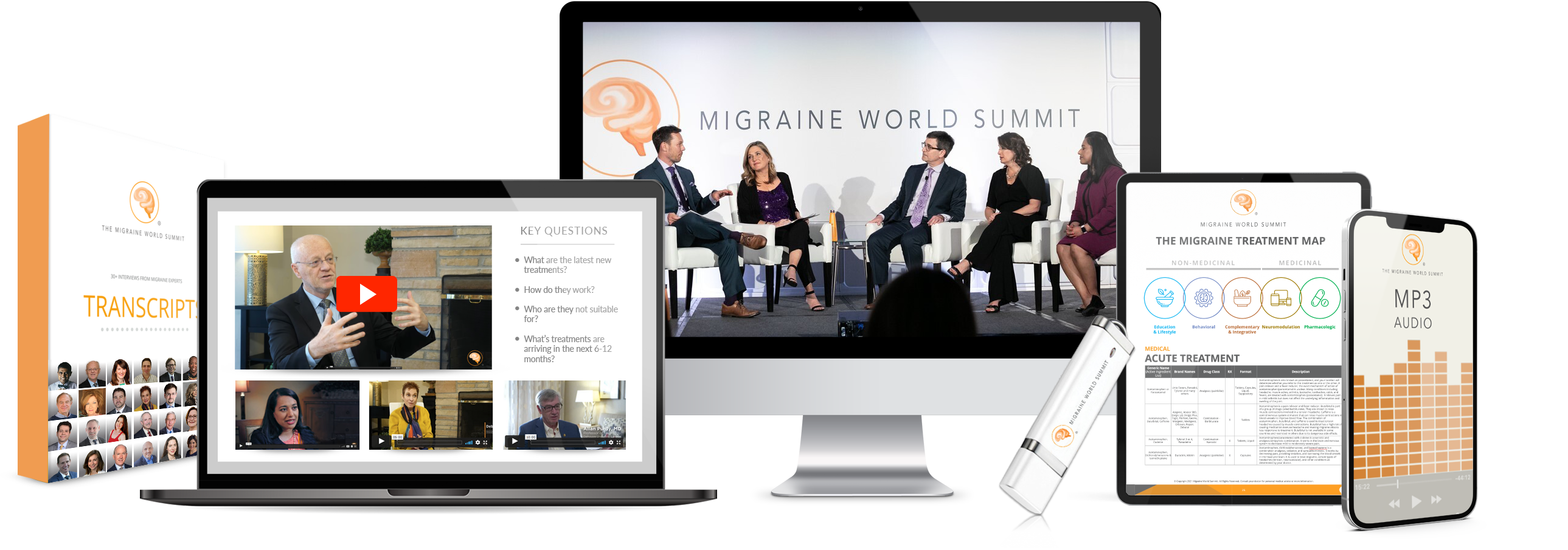Long-Term Effects of New Migraine Medications
You are currently watching a preview of this interview. Unlock the full version by upgrading to an Access Pass bundle! Get FREE access to 8 expert interviews from Day 1 and Day 2 when you register today!
Key Questions
- What kinds of studies are done to test the safety of new medications? How do new medications make it to market?
- What is the role of the FDA in the development of new drugs?
- What do the different phases of getting a drug to the market entail?
- Are there aspects of clinical trials that might ensure the success of a drug but that also could be harmful to patients in the long run?
- How long does it take for a new drug to be developed?
- What’s the difference between an adverse event and a side effect?
- When is it a good idea to try a medication for which we don’t yet know the long-term risks?
- How do patients and clinicians weigh the tolerability and side effects of a medication?
- How do clinicians find out whether migraine medications cause complications or interact with a patient’s other medical conditions, such as thyroid issues?
- What have recent studies shown about some of the newer CGRP medications?
- Have studies been conducted on the long-term effects and possible dependency issues of CGRP medications?
- What do recent studies show about Aimovig, the first CGRP medication to be introduced and therefore used the longest?
- Can these findings be applied to other similar drugs?
- Why was the label for Aimovig revised after it was introduced?
- Why do CGRPs potentially affect the GI tract?
- How are side effects of a drug monitored after clinical trials are over and it’s on the market?
- Have any migraine medications ever been pulled from the market because of safety issues with long-term use?
- Which types of migraine medications are contraindicated for patients with heart risk?
- When would a CGRP medication be preferable to a triptan?
- Why is it important to let your doctor know about all medications you’re taking?
- What recommendations are there for people who might be afraid to try some of the newer targeted medications and are instead relying only on their standard ones?
- What is a claims data analysis and what does it show?
- What is the best way to find out if a medication has long-term side effects, and then to determine if the benefit outweighs any risks?
Interview Notes
Find more about Robert Cowan, MD and his work here:
- Robert Cowan, MD, FAAN | Stanford Health Care
- Five-year study on the safety of erenumab (Aimovig)
- Long-term safety of erenumab (Aimovig) : Results from a 52-week study
Treatments Mentioned
- Aimovig (erenumab)
- Ajovy
- CGRP monoclonal antibodies
- DHE
- DHE IV
- Emgality
- Gepants
- Lasmiditan
- Methysergide
- MAO (monoamine oxidase) inhibitors
- Nurtec ODT
- Propranolol
- Qulipta
- Triptans
- Ubrelvy
- Vyepti
- Zomig
Please note: The Migraine World Summit’s aim is to bring you a variety of perspectives and expertise, independent of bias or judgment. Alternative theories presented in this video have not been medically reviewed. Views expressed in this interview do not necessarily represent the views of the Migraine World Summit. Please always consult your health care professional and do your own research before making changes to your treatment plan.

Robert P. Cowan, MD
Professor of Neurology & Director of Research in Headache and Facial Pain
Stanford University School of Medicine
Dr. Robert P. Cowan is a clinical professor of neurology and director of the Stanford Headache and Facial Pain Program Research division at Stanford University. He is board certified in neurology and pain medicine with a subspecialty certification in headache medicine. Dr. Cowan has held several nationally elected positions, including chair of multiple sections for the American Headache Society (AHS).
He is the past president of the Headache Cooperative of the Pacific and was the founding chief of the headache division in the Department of Neurology at Stanford, and before that, at the Keck School of Medicine of USC. He is a fellow of the American Academy of Neurology and the American Headache Society. He has served on the boards of the Alliance for Headache Disorders Advocacy and the now-defunct American Headache and Migraine Association. He has published over 200 articles, chapters, abstracts, and posters and is the author of The Keeler Migraine Method.
Interviews from Robert P. Cowan, MD
Unofficial Side Effects of CGRP Monoclonal Antibodies
Long-Term Effects of New Migraine Medications
Why Most Doctors Get the Diagnosis Wrong
Best Natural, Affordable and Free Treatments
Migraine Causes & Triggers

Purchase full access to the entire 2024 Summit to unlock:
- All expert interviews with separate audio (MP3) files & transcripts
- 30 extended, uncut interview editions with hours more expert footage
- Lifetime on-demand access with no annual fee to 2024 Summit
- Interview Summaries
- Treatment Directory & Guidelines
- And much more!
Related Talks for: Day 5 (2022)
Strategies to Boost Brain Health
Krystal L. Culler, DBH, MA
New Daily Persistent Headache: Causes, Symptoms & Treatment
David Dodick, MD
Food and Diets: A Nutritionist’s Take On How They Affect Migraine
Margaret Slavin, PhD, RDN
The Association of Migraine Disorders (AMD) is devoted to expanding the understanding of migraine disease and its true scope. Migraine is a full body condition with a broad spectrum of symptoms, AMD is focused on including many medical specialties in the management of this disease.

Watch videos in silence or read along with the expert interview. Simply turn on CC in video controls in the lower right corner of the video. Note: closed captions are not available on preview videos or extended editions.






